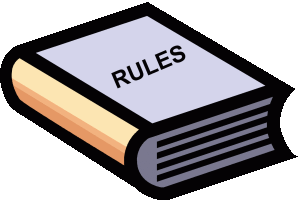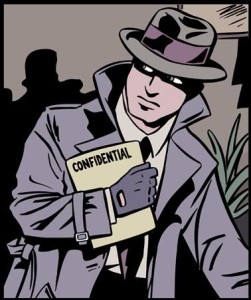The plaintiff’s bar looks at UIM insurance with mouth-watering desire, expecting a windfall in every case by merely invoking Washington’s extra-contractual causes of action. Some courts go along with this, assuming that extra-contractual treatment of UIM coverage is just as generous as any other coverage. But in fact, the Washington Supreme Court has already provided the basic framework to slam the door on this approach:
- The “enhanced obligation” of insurers to give equal consideration to the insured’s interests does not apply to UIM insurers. Ellwein v. Hartford Acc. & Indem. Co., 142 Wn.2d 766, 779-80, 15 P.3d 640 (2001), overruled on other grounds, Smith v. Safeco Ins. Co., 150 Wn.2d 478, 486, 78 P.3d 1274 (2003).
- The relationship between a UIM insurer and its insured (at least after coverage is confirmed) is the same as the relationship between a liability insurer and a third-party claimant. (citing Dayton v. Farmers Ins. Group, 124 Wn.2d 277, 281, 876 P.2d 896 (1994)).
- That relationship, in both cases, is adversarial within the confines of the normal rules of procedure and ethics. Ellwein, 142 Wn.2d at 780.
- A UIM insured cannot be put in a better position than she would have been as a third-party claimant to a liability policy. Id.
- There are no extra-contractual remedies available to a third-party claimant against a liability insurer. Tank v. State Farm Fire & Cas. Co., 105 Wn.2d 381, 392-95, 715 P.2d 1133 (1986).
These rules define extra-contractual liability for UIM insurers. Yet, when insurers attempt to apply these rules, most courts only give them lip service and continue to treat UIM the same as other types of insurance. Because of this, Washington appellate courts should address some of the arguments commonly made today, which existing case law precludes. Here are some examples:
- The duty of good faith and fair dealing for UIM insurers is satisfied if the insurer complies with the “normal rules of procedure and ethics.”
 At first glance, it may seem that the Supreme Court contradicted itself in Ellwein, first stating that “UIM coverage requires that a UIM insurer be free to be adversarial within the confines of the normal rules of procedure and ethics,” and then stating that “the duty of good faith and fair dealing survives within the UIM relationship” in the next paragraph. In reality, there is no contradiction in acting in good faith and following the “normal rules of procedure and ethics.” Insurers should argue that the best reading of Ellwein is that a UIM insurer satisfies its duty of good faith by complying with the “normal rules of procedure and ethics.”
At first glance, it may seem that the Supreme Court contradicted itself in Ellwein, first stating that “UIM coverage requires that a UIM insurer be free to be adversarial within the confines of the normal rules of procedure and ethics,” and then stating that “the duty of good faith and fair dealing survives within the UIM relationship” in the next paragraph. In reality, there is no contradiction in acting in good faith and following the “normal rules of procedure and ethics.” Insurers should argue that the best reading of Ellwein is that a UIM insurer satisfies its duty of good faith by complying with the “normal rules of procedure and ethics.”
- An insurer’s internal evaluations, mental impressions, and negotiation strategy in attempting to settle UIM claims are not discoverable.
 This rule is a corollary of the principle that a UIM insured cannot be put in a better position than she would have been as a third-party claimant to a liability policy. Third-party claimants in the liability insurance context are not entitled to discovery of documents created in anticipation of litigation by a liability carrier because they are covered by the work product immunity codified in CR 26(b)(4). Heidebrink v. Moriwaki, 104 Wn.2d 392, 706 P.2d 212 (1985). Accordingly, UIM insureds are not entitled to the materials created in anticipation of litigation against the underinsured tortfeasor whose shoes the insurer stands in.
This rule is a corollary of the principle that a UIM insured cannot be put in a better position than she would have been as a third-party claimant to a liability policy. Third-party claimants in the liability insurance context are not entitled to discovery of documents created in anticipation of litigation by a liability carrier because they are covered by the work product immunity codified in CR 26(b)(4). Heidebrink v. Moriwaki, 104 Wn.2d 392, 706 P.2d 212 (1985). Accordingly, UIM insureds are not entitled to the materials created in anticipation of litigation against the underinsured tortfeasor whose shoes the insurer stands in.
- Insurers have no duty to settle UIM claims
When true “adversaries” attempt to negotiate disagreements outside of court, there is no law requiring them to succeed. The right to have one’s disagreement decided by the courts is, in fact, a basic right that is only waived through voluntary agreement. So, if handling of UIM claims is in fact adversarial as the Supreme Court has stated, there should be no general duty to settle claims out of court.
 The only context in which insurers have a special “duty to settle” is where settlement by a liability insurer with a third-party claimant protects its insured from the risk of an “excess” judgment above the policy limits. This scenario does not arise in the UIM context because the only party who bears any risk of an excess judgment is the underinsured tortfeasor, who is not the carrier’s insured. The insurer is not protecting any interests other than its own interests in a UIM claim.
The only context in which insurers have a special “duty to settle” is where settlement by a liability insurer with a third-party claimant protects its insured from the risk of an “excess” judgment above the policy limits. This scenario does not arise in the UIM context because the only party who bears any risk of an excess judgment is the underinsured tortfeasor, who is not the carrier’s insured. The insurer is not protecting any interests other than its own interests in a UIM claim.
- The remedy of coverage by estoppel is not available for UIM bad faith.
 Of all remedies available in insurance bad faith law in Washington, coverage by estoppel can be the most onerous. For example, if a claimant is awarded $1,000,000 in damages by a jury for her injuries and the UIM limits are only $100,000, coverage by estoppel would justify an award of the entire million. There are currently no cases directly addressing whether there can be coverage by estoppel in the UIM context, but the precedents under other coverages illuminate that there cannot. First, the Supreme Court has held that there is no coverage by estoppel in first party insurance context, which includes UIM. Coventry Assocs. v. Am. States Ins. Co., 136 Wn.2d 269, 961 P.2d 933 (1998). Second, even to the extent that coverage by estoppel is available in the third-party context is invoked, that remedy is available only for breaches of the duty to defend (which does not exist under UIM) and the duty to settle (which also does not exist as discussed above).
Of all remedies available in insurance bad faith law in Washington, coverage by estoppel can be the most onerous. For example, if a claimant is awarded $1,000,000 in damages by a jury for her injuries and the UIM limits are only $100,000, coverage by estoppel would justify an award of the entire million. There are currently no cases directly addressing whether there can be coverage by estoppel in the UIM context, but the precedents under other coverages illuminate that there cannot. First, the Supreme Court has held that there is no coverage by estoppel in first party insurance context, which includes UIM. Coventry Assocs. v. Am. States Ins. Co., 136 Wn.2d 269, 961 P.2d 933 (1998). Second, even to the extent that coverage by estoppel is available in the third-party context is invoked, that remedy is available only for breaches of the duty to defend (which does not exist under UIM) and the duty to settle (which also does not exist as discussed above).
* * *
It is up to insurers to ensure that favorable appellate precedents are made on each of these issues in the UIM context. In the absence of such authority, trial courts will continue to lump UIM together with all other insurance in interpreting insurers’ extra-contractual liability, despite precedent to the contrary and to the detriment of the industry as a whole.
